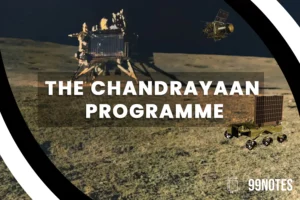8 September 2023 : Daily Current Affairs
Daily Current Affairs
- 1. Delhi may turn venue for dialogue on reviving the Black Sea Grain Initiative
- 2. African Union to join G-20, as Sherpas reach a deal
- 3. Panchayats in Rajasthan to take up livelihood programmes in villages.
- 4. Do subsidies and safety nets take focus away from generating jobs?
- 5. Lord Of Dance: History, Symbolism of Shiva’s Nataraja Form
- 6. Scientists grew whole model of human embryo without sperm or egg.
- 7. Aditya L1 takes selfie, snaps Earth, Moon
- 8. Japan’s Moon mission takes off, expected to land next February.
8-September-2023
Daily Current Affairs For UPSC ,Daily Current affairs of The hIndu and Indian Express.
1. Delhi may turn venue for dialogue on reviving the Black Sea Grain Initiative
Topic: GS2 – International relations.
Context:
- United Nations Secretary-General Antonio Guterres is seeking to revive the Black Sea Grain Initiative (BSGI) during talks on the sidelines of the G-20 Summit in Delhi.
More about the news:
- The BSGI, which facilitated grain exports from Russia and Ukraine, lapsed in July.
- Leaders including Turkey President Recep Erdogan, Russian Foreign Minister Sergey Lavrov, EU leaders, and UN officials will aim to reach a compromise that allows the resumption of grain exports from Ukrainian ports.
- India supports the BSGI initiative but was unaware of specific meetings during the G-20 Summit.
- The BSGI was originally signed to prevent shortages of wheat and other commodities due to the Ukraine conflict.
- Russia declined to renew the deal in July, citing unkept promises by Western countries.
- The UN is deeply engaged in resolving the issue, which involves granting Russia more access to financial markets in exchange for guarantees regarding Ukrainian ships and ports exporting grain.
2. African Union to join G-20, as Sherpas reach a deal
Topic: GS2 – International relations.
Context:
- Prime Minister Narendra Modi presented a 12-point proposal to enhance cooperation between India and the Association of Southeast Asian Nations (ASEAN) during the annual ASEAN-India Summit.
More Information about the news:
- The proposal covers areas such as connectivity, trade, and digital transformation.
- Modi announced the establishment of a multi-modal connectivity and economic corridor linking Southeast Asia, India, West Asia, and Europe.
- India offered to share its digital public infrastructure with ASEAN partners.
- The proposal includes a call for collective action against terrorism, terror financing, and cyber-disinformation.
- Modi also addressed the East Asia Summit, emphasizing joint efforts to strengthen sovereignty and territorial integrity while advocating for an effective code of conduct in the South China Sea compliant with UNCLOS.
3. Panchayats in Rajasthan to take up livelihood programmes in villages.
Topic: GS2 – governance
Context:
- Empowerment of Panchayati Raj Institutions in Rajasthan has allowed village panchayats to engage in livelihood programs alongside their regular sanitation and infrastructure projects.
What Is in the news?
- The three-tier Panchayati Raj system in the state aims to ensure active public participation.
- Rural Development and Panchayati Raj Minister stated that government’s vision document would expand the roles of village panchayats in rural development, as part of ‘Mission Rajasthan-2030’ to make Rajasthan the country’s top state by 2030.
- Village panchayats will be enabled to launch poverty alleviation programs and initiatives for health, education, women’s security, children’s growth, and environmental protection.
- Gram Sabhas (village assemblies) will regularly discuss and approve works before their execution.
- Baal Panchayats will connect children with the Panchayati Raj system.
- Suggestions for the vision document include linking women’s self-help groups with private industries, rainwater harvesting, pasture land development, utilizing hydrology and meteorology data on revenue maps, supporting specific industries in villages, and integrating rural livelihood programs with nutrition and school uniforms.
Significance: information can be used as a case study in mains answer.
4. Do subsidies and safety nets take focus away from generating jobs?
Topic: GS3 – subsidies and unemployment
Context:
- Despite India’s impressive economic growth, unemployment remains a significant concern.
Balancing Palliative Measures and Structural Solutions
- Political parties, in the run-up to elections, are making promises to address issues like rising essential commodity prices, but critics argue that these promises are populist and do not tackle the systemic issue of unemployment.
- The focus on growth as a solution to unemployment has not yielded the expected results, leading to the need for palliative measures like electoral promises.
- The agriculture sector, the largest employer in India, faces challenges such as non-remunerative prices for produce and supply chain vulnerabilities exacerbated by climate change.
- While some promises may alleviate immediate economic hardships, they may not address the root causes of economic challenges.
- The debate also touches on fiscal responsibility and the need for efficient fiscal expenditure.
- The discussion highlights the complexities of addressing unemployment in India, which requires a multifaceted approach considering structural changes and new economic opportunities.
- The role of technology and innovation, such as supply chain resilience and mining for energy transition, is also mentioned as potential solutions to job creation.
5. Lord Of Dance: History, Symbolism of Shiva’s Nataraja Form
Topic: Prelims, GS1-Art forms
Context:
- A 28-feet Nataraja bronze sculpture, considered the world’s tallest of its kind, is set to adorn the G20 Leaders’ Summit venue in New Delhi.
- The statue hails from Swamimalai, a small town in Tamil Nadu’s Thanjavur district known for its bronze sculptures. (GI Tag)
- The design draws inspiration from three revered Nataraja idols at the Thillai Nataraja Temple in Chidambaram, the Uma Maheswarar Temple in Konerirajapuram, and the Brihadeeswara Temple in Thanjavur.
Details of the Sculpture:
- The statue weighs 19 tonnes and is made from eight metals, including gold, silver, lead, copper, tin, mercury, iron, and zinc (Ashtadhatu).
- Crafted by Srikanta Stapathi and his brothers Radhakrishna Stapathi and Swaminatha Stapathi, sons of the renowned sculptor Devasenapathy Stapathi.
- The sculpture follows the Chola period’s Nataraja models, specifically those from Chidambaram and Konerirajapuram.
- It stands at 22 feet in height, with a 6-foot pedestal, making the complete structure 28 feet tall.
Cholas and Nataraja:
- All three temples were built by the Cholas, who at their peak from the 9th-11th centuries AD, ruled over much of peninsular India.
- Although Shiva was first portrayed in sculpture as Nataraja in the fifth century AD, its present, world-famous form evolved under the Cholas.
- The Nataraja image in its different forms holds the first place among Chola bronzes.
Significance and Symbolism:
- The Nataraja statue symbolizes Lord Shiva’s dance and is an iconic representation of Tamil culture.
- Chola bronzes, noted for their beauty and craftsmanship, hold a prestigious place in the art world.
Swamimalai Bronze Statues of Tamil Nadu: GI-Tagged Craft
Origins:
- Swamimalai artisans (sthapathi) create bronze statues using the ancient lost wax technique.
- The tradition started during the Chola dynasty with temple construction fostering diverse crafts.
Crafting Tools:
- Traditional tools like leaf strips for measurements, spatula for wax shaping, and knife for carving.
- Scraper refines relief, soldering iron smooths wax, hammer-chisel removes excess metal.
- Engraving tools, files, and forceps for intricate carving.
Casting Process:
- Sculptors utilized the‘lost-wax’ casting method, a time-tested technique since the Chola era.
- Beeswax-resin-groundnut oil mixture is used to create a wax model based on Agama Shastra.
- The process involves creating a wax model encased in clay; the clay is sourced from the alluvial soil near the Cauvery River in Swamimalai.
- Model covered in loam, holes drilled for metal pouring, then cooled to harden.
- Molten bronze is poured into the hot mold, breaking it after cooling, and details are carved, with emery paper polish.
Evolution:
- The Chola dynasty’s temple construction attracted artisans to Swamimalai.
- Sthapatis continued the bronze statue-making tradition over centuries.
Diverse Creations:
- Initially religious statues, primarily Hindu deities.
- Present demand extends to cultural figures, like Ramayana and Mahabharata heroes.
GI Tag:
- Swamimalai Bronzes was awarded a Geographical Indicator (GI) tag.
- Assures authenticity for consumers, especially for international buyers.
- Guarantees genuine, original craft from the region.
6. Scientists grew whole model of human embryo without sperm or egg.
Topic:GS3-Science and Tech
Context:
- Scientists have successfully grown a “human embryo” in the lab without using an egg or sperm.
How was the embryo model created?
- The researchers from Israel used a mix of stem cells and chemicals, a small portion of which was able to spontaneously assemble to form different types of cells that form the foetus, those that provide nutrients to the foetus, cells that lay out the plan for development of the body, and cells that create structures like placenta and umbilical cord to support the foetus.
Why are embryo models and research important?
- This research is crucial because the initial days of embryo development is when the majority of miscarriages and birth defects occur.
- Studying the initial stages, may help understand genetic and inherited diseases better.
- The understanding of why some embryos develop normally, retain the proper genetic code, and implant properly in the womb while others do not, may also help in improving success rates of in vitro fertilization.
Can lab-grown embryos be used to get pregnant?
- These models are meant to just study the early stages of development of a foetus and cannot be used to get pregnant.
- Creating a lab-based model that mimics the properties of early embryos is still far from an actual embryo that can implant to the lining of the womb.
Way Forward:
- This exciting development will allow us to manipulate genes to understand their developmental roles in a model system.
- This will let us test the function of specific factors, which was difficult to do in the natural embryo.
7. Aditya L1 takes selfie, snaps Earth, Moon
Topic: GS3- Science and tech
Context:
- ADITYA L1, India’s first mission to study the Sun, has taken images of itself as well as the Earth and the Moon from the highly elliptical orbit around the Earth where it is currently present.
Details:
- The video posted by the Indian Space Research Organisation (ISRO) showed an image of a portion of the spacecraft captured by its on-board camera.
- It showed the Visible Emission Line Coronagraph (VELC) that will study the solar corona, including the very inner layers that haven’t been studied by other missions
- It also showed the Solar Ultraviolet Imaging Telescope (SUIT) that will study the different layers of solar atmosphere in the shorter UV wavelengths that are not possible to detect from Earth.
- The spacecraft is currently undergoing a series of manoeuvres to raise its orbit as well as velocity till it can finally be slingshot towards the Sun.
8. Japan’s Moon mission takes off, expected to land next February.
Topic: GS3-Science and Tech
Context:
- Japan launched a lunar exploration spacecraft aboard a homegrown H-IIA rocket, hoping to become the world’s fifth country to land on the moon early next year.
Details:
- Japan Aerospace Exploration Agency (JAXA) said the rocket took off from Tanegashima Space Center in southern Japan as planned and successfully released the Smart Lander for Investigating Moon (SLIM).
- Dubbed the “moon sniper”, Japan aims to land SLIM within 100 metres of its target site on the lunar surface.
- The $100-million mission is expected to start the landing by February after a long, fuel-efficient approach trajectory.
Earlier attempts:
- Two earlier lunar landing attempts by Japan had failed in the last year.
- JAXA had lost contact with the OMOTENASHI lander & scrubbed attempted landing in November.
- The Hakuto-R Mission 1 lander, made by Japan startup crashed in April as it attempted to descend on the Moon.
For Enquiry

8 September 2023 : Indian Express

8 September 2023 : PIB

8 September 2023 : Daily Current Affairs

8 September 2023 : The Hindu Editorial Notes PDF

The Chandrayaan Programme

7 September 2023 : Daily Answer Writing

7 September 2023 : Daily Quiz

7 September 2023 : Indian Express

7 September 2023 : PIB

7 September 2023 : Daily Current Affairs
Indian Express 8 September 2023 : Indian Express Indian Express
8-September-2023
The Indian Express, CSE candidates can stay informed about current…
PIB 8 September 2023 : PIB PRESS INFORMATION BUREAU
8-September -2023
Daily Current Affairs For UPSC ,The PIB ( Press Information…
Daily Current Affairs 8 September 2023 : Daily Current Affairs Daily Current Affairs
8-September-2023
Daily Current Affairs For UPSC ,Daily Current affairs of The hIndu…
September- The Hindu Editorial 8 September 2023 : The Hindu Editorial Notes PDF The Hindu Editorial
8-September-2023
Daily Current Affairs For UPSC ,The Hindu Editorial Summary
Facebook-f
Twitter
Youtube
1. Disappearing…
Blogs Upsc The Chandrayaan Programme Chandrayaan Programme, also known as the Indian Lunar Exploration Programme, is an ongoing series of…
mains answer writing 7 September 2023 : Daily Answer Writing Mains Answer Writing
One of the key components of these exams is the written test, which consists of…
Daily Quiz 7 September 2023 : Daily Quiz 7 September 2023 : Daily Quiz…
Indian Express 7 September 2023 : Indian Express Indian Express
7-September-2023
The Indian Express, CSE candidates can stay informed about current…
PIB 7 September 2023 : PIB PRESS INFORMATION BUREAU
7-September -2023
Daily Current Affairs For UPSC ,The PIB ( Press Information…
Daily Current Affairs 7 September 2023 : Daily Current Affairs Daily Current Affairs
7-September-2023
Daily Current Affairs For UPSC ,Daily Current affairs of The hIndu…



